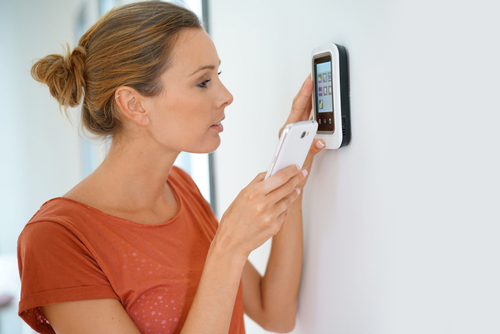‘Selectively engaged’ energy consumers should be focus of utility marketing

Energy ratepayers and other customers make the move to renewables and smart devices for different reasons, and a new report from the Smart Energy Consumer Collaborative (SECC) focused on those customers who are right in the middle.
According to SECC’s report, “Consumer Values: Moving the Needle on Engagement,” there are three different energy consumers: those that are always engaged, those that are selectively engaged, and those that are rarely engaged.
According to Nathan Shannon, deputy director at SECC, the new report was focused mainly on those consumers that are selectively engaged in the smart energy process, which he explained is “about 40 percent of the U.S. population.” The researchers found that most of the selectively engaged consumers could be further broken out into three separate intentions, each making up around one-third of the category: savings seekers, technology cautious, and movers and shakers.
Savings seekers are willing to consider smart energy initiatives if they are shown the cost savings; the technology cautious are willing to use energy wisely, but have not yet seen technology making an impact in that goal; and movers and shakers are willing to trust their utility more if shown smart energy can really make a difference.
Selectively engaged customers, Shannon said, are interested in certain programs or offerings, but they’ve never actually participated. “How do we get them off the couch to join in?”
The SECC researchers wanted to understand what motivates the selectively engaged to participate so that utilities and other energy providers can best market to those consumers. If a survey respondent didn’t believe they could see a return on investment on, for instance, a $250 Nest thermostat, would something like a rebate for the item or proof on their bill of savings be enough to get them to make a move?
“The main thing that consumers want when it comes to a return on investment is they want to understand how long it’s going to take to pay that off or how much actually they would save,” Shannon said. “You can tell a customer, ‘It’s tied up with our time-of-use rate, if you shift your usage during this time and do your laundry, then you’ll save $6, or you’ll save $5.’ So really giving them a tangible number — it helps them understand how much they could save. It’s the key motivator.”
Lower bills was the first motivator for saving energy, according to the study, but it was followed closely by some other interesting factors. Environmental motivations, clean energy, and safety and security were also noted as factors for upgrading. One factor alone was rarely enough for a consumer to make a change, especially for customers in households that had an annual income of over $75,000 a year. “There’s a lot of other ways they can save money more than just save $10 a month on energy. So you needed to give them an additional motivation.”
“Saving money is great. That kind of gets your foot in the door,” he added. “But if you can give them another benefit, or two other benefits, some things like that really seem to get them over the hurdles.”
Fifteen percent of consumers said safety and security was the most important benefit of smart energy, which included “saving energy and preserving a clean environment,” according to the report.
Shannon said that security would be an increasingly important factor to consumers in the future, “because there are a lot more devices being connected. It’s not just your heat and your lights that are relying on electricity – it’s all of your mobile devices and your security and your smart thermostat, smart doorbells, that are really important to people’s daily lives.”
The SECC report found that there are many ways to encourage the selectively engaged to participate in smart energy programs, including deepening customer relationships to encourage engagement, changing the mindset with small changes (they found that energy efficient lighting is the most commonly reported energy-related action consumers have taken), and removing barriers to energy-related programs.
As the energy industry evolves, utilities and energy companies must understand customers need to be engaged in a very different way.
“As other industries shift to a relationship model of engaging consumers over a lifetime, our industry must also make this shift: seeing the consumer as a person; providing service that is tailored to the context of the consumer’s needs and values; personalizing the service and knowing the consumer well enough to know where the consumer is now and where they want to go; helping consumers meet their energy needs and goals; and empowering them to take control of their energy use,” the report said. “These are vitally important perspectives that need to take precedence across the energy ecosystem.”
